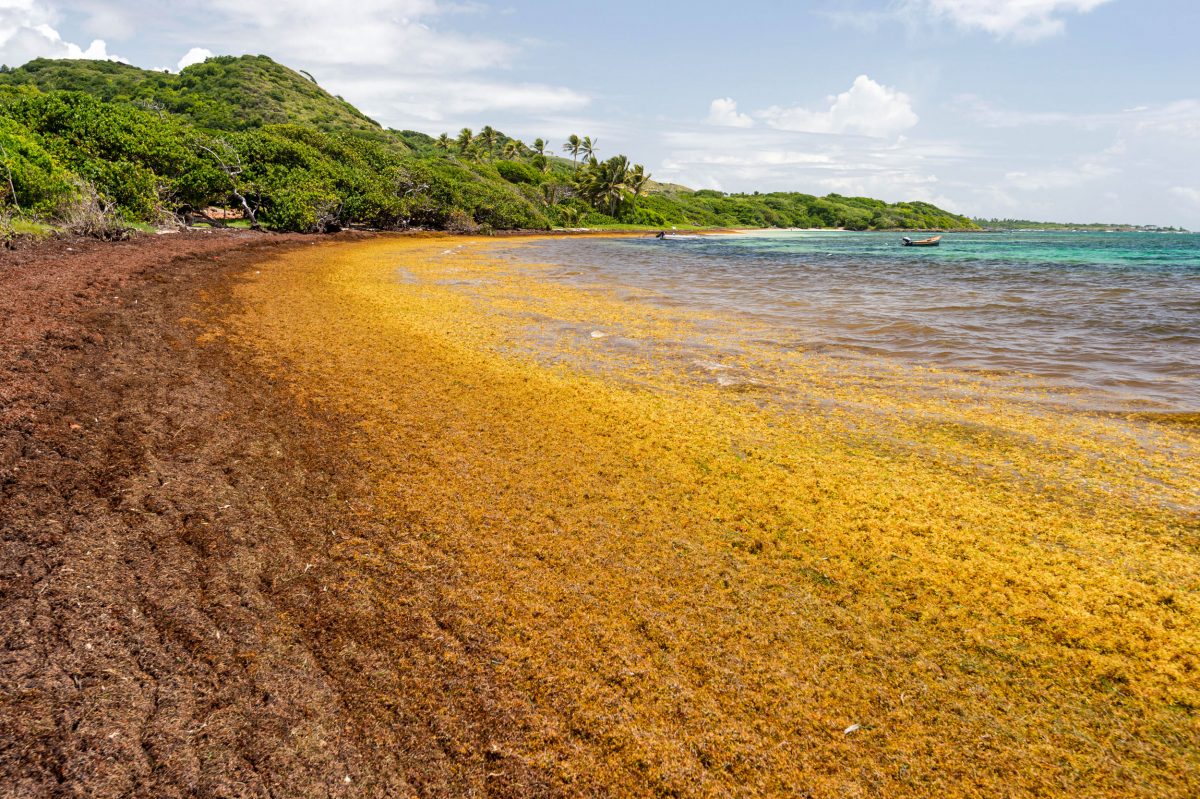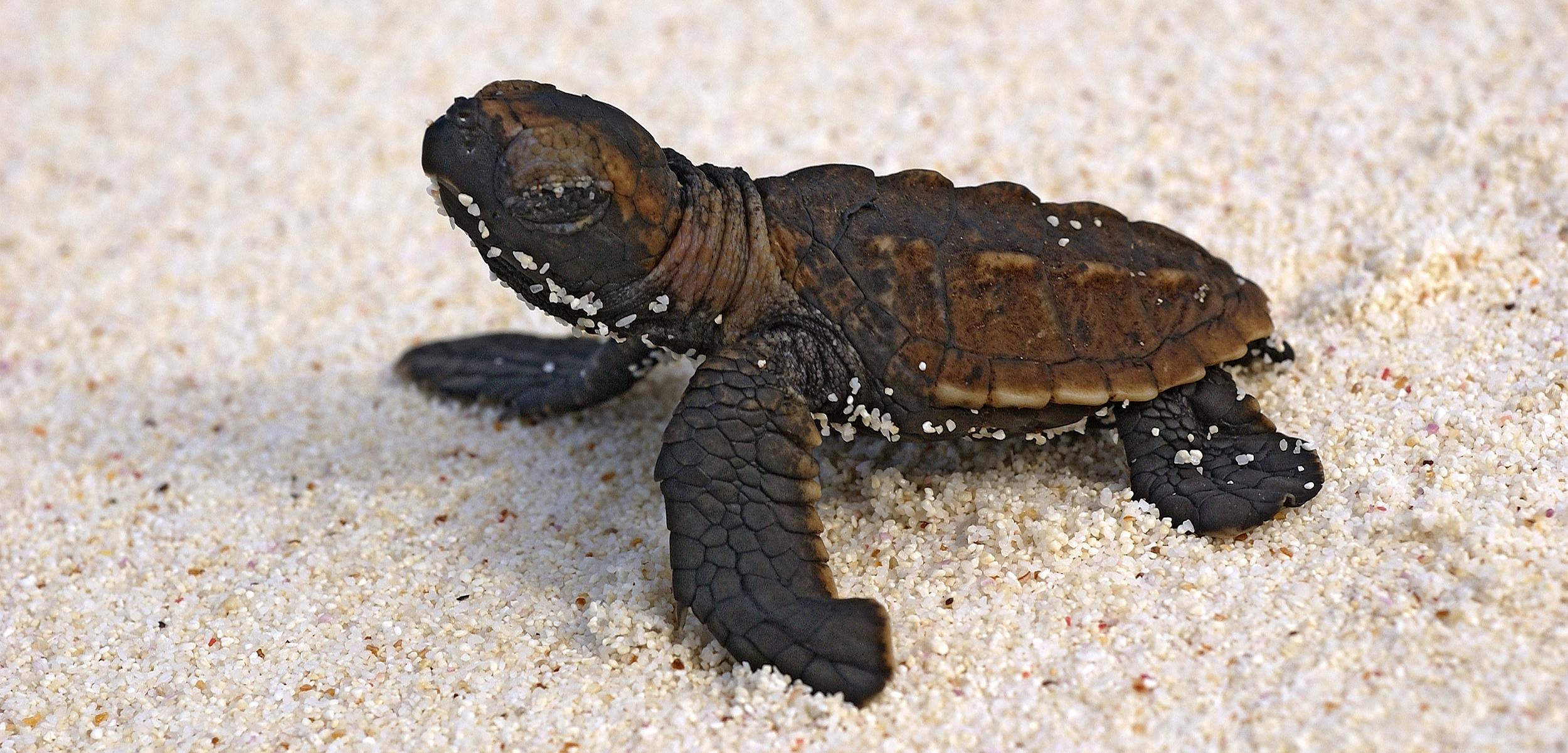Seaweed Is Putting Sea Turtles in a Hot Mess
The great Atlantic sargassum belt is inundating turtle nesting beaches with seaweed, causing a raft of problems.
Article body copy
Baby sea turtles don’t have an easy start to life. Breaking out of their eggs into a dark nest, they must dig themselves out of the sand, shuffle down to the water’s edge, and begin a dangerous odyssey through the ocean. From incubation to maturation, they face many threats, from ants, crabs, and suffocating seaweed to plastic and habitat loss. It’s no wonder only one in 1,000 are thought to make it to adulthood.
At a population level, sea turtles are facing new risks, too. For most sea turtle species, the sex of a developing embryo changes based on the temperature, with hotter temperatures yielding more females. Warming caused by climate change is already threatening to shift the sex ratio, raising concerns about turtles’ long-term future.
But these threats are not occurring in isolation. As new research shows, beached seaweed is causing sand to warm even more, threatening sea turtle embryo development and potentially skewing their sex ratio.
Since 2011, giant rafts of brown sargassum seaweed have been choking coasts along the Caribbean Sea and tropical Atlantic Ocean. The seaweed is splintering off from the great Atlantic sargassum belt, a floating mass stretching from West Africa to the Gulf of Mexico that appears to be growing each year. The vast amount of seaweed is creating ongoing challenges for local peoples, and raising concerns among scientists for the many organisms that may be unable to cope with the overabundance.
Andrew Maurer, an ecologist at North Carolina State University, worried that all this seaweed may be affecting developing sea turtles still in their eggs. “Warmer temperatures can produce smaller, weaker hatchlings, can result in embryonic mortality, and can produce more females,” he says.

For almost a decade, giant rafts of brown sargassum seaweed have been choking coasts along the Caribbean Sea and tropical Atlantic Ocean. The floating mass of seaweed stretches from West Africa to the Gulf of Mexico and appears to be growing each year. Photo by Marc Bruxelle/Alamy Stock Photo
On a hawksbill sea turtle nesting beach on a small island just off Antigua, Maurer and his colleagues set up a series of plots with varying levels of seaweed cover. Burying data loggers around 15 centimeters down—roughly the depth a turtle mother buries its eggs—they recorded the temperatures in the summer, at the beginning of nesting season; and in the autumn, when most of the eggs are buried.
They found that in the summer, a cover of seaweed 15 centimeters thick created shade that caused the average temperature in the sand to fall by 0.17 °C. This is in line with what they were expecting. In the autumn, however, the seaweed had the opposite effect. Though they aren’t exactly sure why, the same amount of seaweed caused the sand to warm. The temperature rose by 0.21 °C—enough to have a significant impact on embryo development. The researchers speculate that perhaps heavy rain soaked the seaweed, slowing evaporation from the sand and decomposing the algae faster, which generated more heat.
Stephanie Kamel, a marine ecologist at the University of North Carolina Wilmington who was not involved in the research, says that this seasonal variability was interesting, especially as summer temperatures recorded in the study were close to the typical sea turtle sex transition temperature of 29 °C. She notes the exact effect on sex ratios is unclear in part because the scientists took the temperature in the sand, not in the nest, and the heat of incubating eggs may alter things further.
Though the analysis is specific to hawksbill sea turtles, the researchers note that other sea turtle species, such as leatherbacks and greens, nest on more exposed beaches closer to the water and are likely similarly at risk, if not more so. Beyond sea turtles, many organisms have evolved to thrive in a particular temperature range, says Maurer.
“When sargassum washes up and changes those conditions, these organisms will be forced to respond and adapt,” he says.

